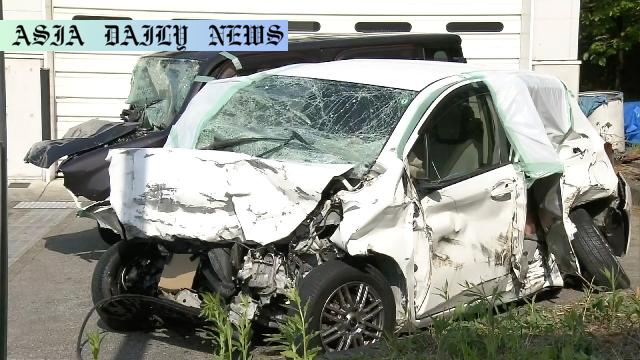Wrong-way accident causes three deaths and severe injuries on the Tohoku Expressway as police investigate safety risks.
- Wrong-way accident kills three and injures 10 in Nasushiobara City, Japan.
- Two drivers died in a head-on collision; one woman was killed in a subsequent pileup.
- Police are investigating the crash and examining safety risks at an interchange.
- Local residents point out design flaws making the interchange dangerous.

Wrong-Way Driving Incident on Tohoku Expressway
A tragic accident occurred on the Tohoku Expressway in Nasushiobara City, just north of Tokyo, claiming three lives and leaving ten others injured. According to Japanese police, the driver of a vehicle traveling against the flow of traffic caused a series of accidents late Saturday evening, resulting in devastating consequences. Reports indicate that the driver continued traveling in the wrong lane for nearly three kilometers despite an earlier minor collision, ultimately leading to a deadly head-on crash with an oncoming car. Both drivers involved in this primary collision lost their lives. The driver of the wrong-way car was a man in his 40s, while the other driver was in his 50s.
Pileup Following Head-On Collision
The traffic congestion caused by the initial accidents led to further collisions, including a devastating pileup involving six vehicles. Among the victims was a woman in her sixties who tragically lost her life when a large truck collided with the stationary line of vehicles. The driver of the truck has since been arrested on suspicion of negligent driving causing death or injury. Two of the ten injured individuals sustained serious injuries, while the remaining victims suffered varying degrees of harm in the aftermath of the chaos.
Interchange Design and Safety Concerns
Authorities suspect that the wrong-way vehicle entered the expressway through the Kuroiso-Itamuro interchange. However, this particular interchange has been the subject of ongoing safety concerns. Local residents have long raised complaints about the design of the interchange, which features a T-junction where vehicles must turn right to access the expressway correctly. Drivers unfamiliar with the area may inadvertently turn left and travel against oncoming traffic. Although warning signs are in place, visibility issues, especially at night, may limit their effectiveness. As part of their investigation, police are reviewing footage from both dashboard and monitoring cameras to gather further details about the incident.
Road Safety Measures and Future Implications
This tragic incident underscores the critical importance of road safety measures, particularly at complex or poorly designed junctions. With three fatalities and ten injuries, the accident signals the urgent need for authorities to address longstanding safety concerns at the Kuroiso-Itamuro interchange and similar areas across Japan. Potential strategies could involve improved signage, enhanced lighting, and structural redesigns to reduce confusion for drivers, especially those navigating the roads at night. As investigations continue, Japanese authorities aim to identify specific weaknesses in the expressway and develop solutions to prevent similar tragedies in the future, prioritizing public safety and efficient traffic regulation.



Commentary
The Human Cost of Design Flaws
The recent tragedy on the Tohoku Expressway serves as a sobering reminder of the human cost associated with road safety oversights. The devastation left in the wake of this wrong-way accident extends well beyond the reported deaths and injuries, profoundly impacting the families and loved ones of the victims. As authorities investigate the causes of this crash, it is essential to reflect on how preventable measures could have saved lives and avoided such heartache.
Addressing Known Risks at Interchanges
The concerns raised by local residents regarding the Kuroiso-Itamuro interchange stand out as a compelling point of focus in this case. When the design of critical infrastructure is flawed, even the most experienced drivers can fall victim to confusion, particularly in adverse conditions such as nighttime driving. By listening to feedback and proactively addressing known risks, transportation authorities can create safer roadways for all users. It’s clear that allowing such concerns to persist heightens the vulnerability of drivers and increases the likelihood of catastrophic events like this one.
Preventative Actions for a Safer Future
Moving forward, this incident should catalyze the implementation of better preventative measures across Japan’s transportation network. Improving signage, installing enhanced lighting, and reevaluating road layouts are just some of the possible interventions to minimize the risk of misdirection on highways. Additionally, leveraging technology such as AI-driven monitoring systems could help authorities identify and mitigate dangerous situations in real time. Ultimately, while tragic accidents like this cannot entirely be eliminated, diligent action and innovation can significantly reduce their frequency and severity.